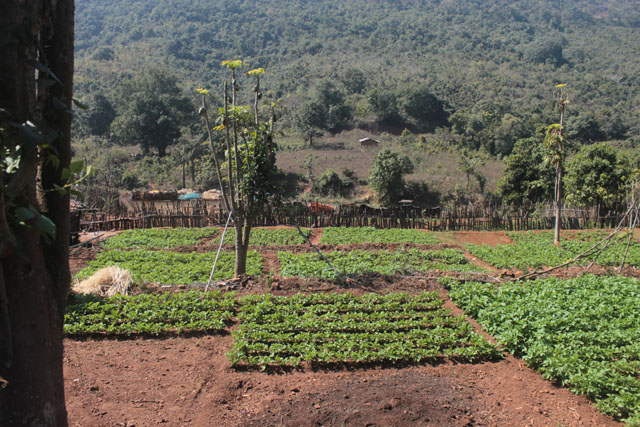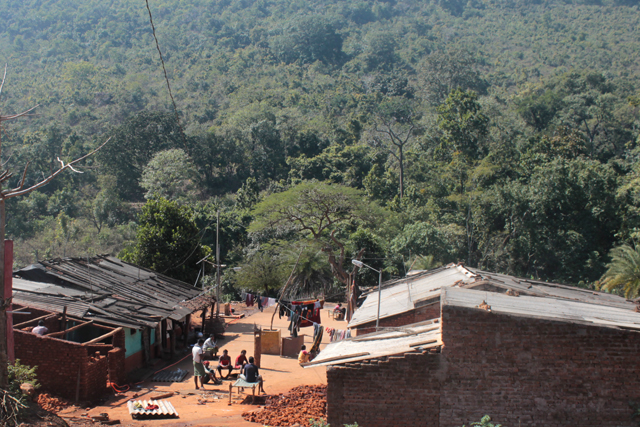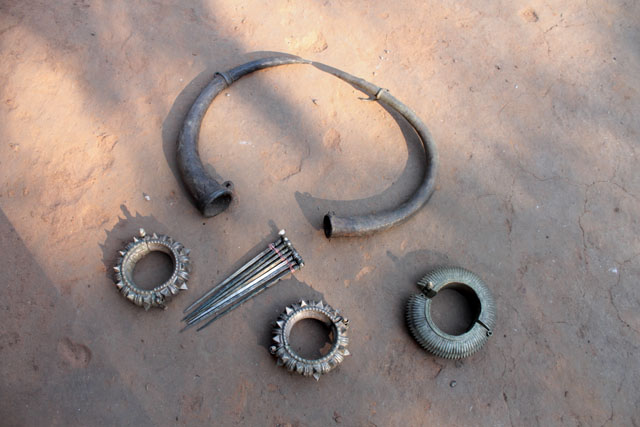‘Life is because of the Gods; with their sacrifice, they gave us life, which nourishes life’
An Ancient Mesoamerican Belief
In 1521 CE, when the Spanish explorer Hemán Cortťs conquered the Aztec capital Tenochtitlan what amazed him was the high intensity of human sacrifices performed in the Great Pyramid of Tenochtitlan in honour of their gods. Indeed human sacrifices in Aztec Civilization had been part of the long cultural tradition of Mesoamerica. Sacrificing a human was viewed as the highest level of the entire panoply of offering which the Aztecs sought to repay their debts to the gods. Even the stage where the sacrificial rites were performed had to be crammed with land’s finest art, treasure, and victims and then buried underneath for their deities.
Human sacrifices in Mayan and Aztec Civilizations have been widely debated in the scholarly world. Curiosity drags a countless number of tourists into dozens of Mesoamerican sites where human sacrifices used to be common sights once upon a time. But many would not know until recent past in yet another corner of the world, the Kondhmal region of highland Odisha, the Kondhs would openly kill a human with a belief for yields of good crops from their slash and burn hill slope fields.

Weapons used for human sacrifice

Sacrificial Posts in a Kondh Settlement

The Kondhs are a Dravidian tribe who live predominantly in the forested mountains of the Eastern Ghats in central-western highlands of Odisha.


The picturesque Eastern Ghats in Kondhmal, the Kondh Territory
Travel Tips
Baliguda Town is at the center of Kondh Territory, which is located at a distance of 300 km from Bhubaneswar (the nearest airport) and major city. Baliguda is connected by excellent roads and it takes 7 hours from Bhubaneswar. The nearest Railway Station is however Lanjigarh (120 km). From Baliguda tourists can visit Darigibadi, also known as Kashmir of Odisha and Belghar (60 km), the abode of Kutia Kondhs. Hotel Bivab in the town is the only stay option which is also most sought after by overseas travellers. Tourists can also visit Mandasur (40 km) near Raikia, which is known as Odisha’s own Silence Valley. Ecotourism bamboo cottages are available at Mandasur for comfortable stay. These community run cottages can be booked online through ecotourism website of Odisha.
Kondhs mean Hilly People in Kui language. They are hardy, war like race of men, well accustomed to jungle life. Until recently with only slightest contact with the plains, the Kondhs had preserved their independence as distinct nobility, bold and fitfully laborious mountain peasantry of dignified manner, proud of their positions as landowners and tenacious of their rights. However, they remained conservative and backward. According to W.W Hunter, a British historian, who visited them in late 19th century, their vices were the indulgence in revenge, and occasionally of brutal passion.







Today, a drive through some of the finest roads in otherwise one of the most remote areas of Odisha, you reach the Kondh Territory. What draws your immediate attention is their linear settlements ascending from hill slopes to the core of mountains surrounded by farmlands, slash-and-burn fields (locally called podu chasa), mountain streams and open and dense forest with no signs of urbanisation far and wide. A rustic rural life resembling a Prehistoric Era welcomes you to the world of Kondhs.
Also Read Here:
Dongria Kondhs of Nimayagiri – Mother Nature’s Own Children






A Kondh Village in Belghar Region

Trees Uprooted for Slash and Burn Cultivation






Houses are seen built on either side of a wide street in two facing rows. Houses share a common verandah and single ridge roof. The walls are decorated by women using geometric and floral motifs painted in red earth and lime. The shrine of the earth goddesses is located in the middle of the village street.
Also Read Here:
The Ancient Hill Tribe of Lanjia Saoras – Journey with a Shaman

A Meriah Post in the Center of the Village




The Kondhs of Odisha constitute several clans within the tribe; however the most prominent are three, the Desia Kondh, the Kutia Kondh and the Dongoria Kondh. Kutias are named after their house plans, which is about 2 feet below the level of the village road. They believe that in remote past they had emerged from a hole or kuti in the earth near Guma village in Belghar region. Their home is a wooden structure with a low roof and an excavated floor to make up for it.
Also Read Here:
Mishings of Majuli – An Anthropological Journey


Today, the Kondhs have settled subsistence farmers, but they also depend upon forest resources and occasional hunting. The hills around their villages are covered with dense mixed forest and one of the common species in the forest is Sal, which has many fold use in their day to day life.




Organic Turmeric for which Kondhamal is well-known
Patches of a forest close to their settlements are regularly cleared for slash and burn cultivation. The Sun is the supreme deity in the Kondh beliefs system and responsible for good happenings. They further believe that sunshine washes away all evils and hence each house must share sunlight of the day equally. In a typical Kutia Kondh house, the main room is provided with a ceiling, which serves as the storeroom. Apart from this over the hearth, bamboo poles are horizontally hung for drying grains and meat. The room is also used for cooking, sleeping and dining. Slash and burn cultivation is being carried out by the Kondhs from time immemorial.

Shifting Cultivation – Patches of Forest Cleared









The Interior of a Kondh House
The land for cultivation is selected by Dani, the priest along with village elites. A particular patch of forest is used continuously for three years for shifting cultivation. Then it is left fallow for more than five years to allow rejuvenation of the forest growth. Cutting of trees in the patch is done in the spring season by their respective family members and are left for some days to dry up. Care is taken while clearing forests; fruit-bearing trees and trees having herbal medicinal property is not touched. A specific variety of seeds is stored for podu chasa, which are first sown and then hoed. During weeding and flowering, certain archaic rituals are carried out to save the crop from natural calamity and infest of insects and locust. The harvest of crops usually takes place after the performance of rituals and sacrifices to appease the spirits linked with agricultural operations as different crops get ready in different types.
In the 19th century, when the Kondhs were first brought to light, their appearance and life were more archaic than what we find them today. Tattooing was largely practised and the Kondhs used tattoo all over their bodies with artistic designs.

The men wore long hair which was tied with a red piece of cloth and decorated with feathers of a peacock or other colourful birds. Both men and women wore minimal garments. Since their area was infested with wild beasts such as tigers, elephants and bears, they lived together in a very unhygienic environment which often led to epidemics. Theoretically, each of the Kondh tribes sprung from a common father and it is governed by a patriarch who represents the common ancestor. The patriarch was also the head priest who could explain the cause of the natural calamity.
Natural calamities and epidemics that destroyed their crops and broke their confidence – they began to attribute to the deities, dead ancestors and sorcery. To escape from these misfortunes they developed magico-rituals administered by the priest, named as Jani. Human sacrifice was the most sought after rites among the Kondhs. It was a means of propitiating the earth goddess whose favours were needed to maintain the fertility of the soil. The Kondhs believed that the blood of the victims caused the redness of the turmeric, an important crop and his fears brought the rains.

According to their folklore, the earth was originally a crude and unstable mass unfit for the comfortable habitation of humankind. It was not conducive for agriculture too. Then the earth goddess ordered to split human blood before her and the Kondhs compiled with this demand by sacrificing a child. Then the soil became firm and productive herewith and the goddess ordered men to repeat the rite year after year.
The victims of human sacrifices were called Meriah in Odia and in Kui Toki or Keddi. The victim could be a male or a female or a child. An adult man was costliest. They could be from any caste except Brahmins and their own community. The victim must be brought with a price otherwise they were considered not acceptable to Earth Goddess. They were always purchased from Panos, a secluded caste community who were attached to every Kondh village. The victims were procured often by kidnapping them in the plains. The Panos also moved into plains often and purchased a number of small boys and girls from the poorer section of the Hindus and sold them to the Kondhs who nurtured them until they were 7 years old. The price was paid in livestock, brass vessels, corn and even land.



Kondh Jewelry made out of silver and brass
The Meriah sacrifice was classified as public and private. While the public sacrifice was offered by a tribe or a village as an entity, private sacrifices were offered by individuals. The public sacrifice was done twice a year, at the time of sowing and at the time of harvest, where they sprinkled blood in their field. Private sacrifices were done by families whenever sickness or great distress came upon them.





Meriah Sacrificial Post in a Kondh Village
On the day of the sacrifice, a thick paste of turmeric would be first applied to the body of the victim and then tied in a sacrificial post in the middle of the field. Both men and women in high spirit would dance around the post holding each other’s hands to the rhythm of beating drums. Then the Jani would wound the Meriah with his axe after which the crowd would rush to the victim and stripped the flesh from his bones keeping the head and intestine untouched. They would then rush to their respective fields and bury them believing that this would fertilize their fields.
It was in 1836, Meriah sacrifice was first noticed by the British. But they could not immediately make an attempt to stop it for various reasons. It was stamped out only in the late 19th century and was replaced with buffalo sacrifice.
Today, the Kondh world has changed drastically with wide roads, electricity, schools, hospitals and other infrastructure creation. Literacy has picked up and modernization is noticeable. But as go deep into the interior of the mountains you will discover the remnants of the horrifying past of human sacrifices that are present in numerous Mariah posts and shrines of Tari Pennu. Their settlement pattern and mode of living are still retained from the earlier tradition.

Author – Jitu Mishra
He can be contacted at jitumisra@gmail.com

GREAT SIR–ENJOYED
LikeLiked by 1 person
Wonderfull ways of seeing .
LikeLiked by 1 person
There are sacrificial pillars which remind us of khond tribes. But for quick info, let me tell you that new new pillars were put in different remote areas out of sight. Even after law and education still this things have’nt stopped. Sacrifice were still performed yearly quitely. The recent human sacrifice report is of 2019.
LikeLike